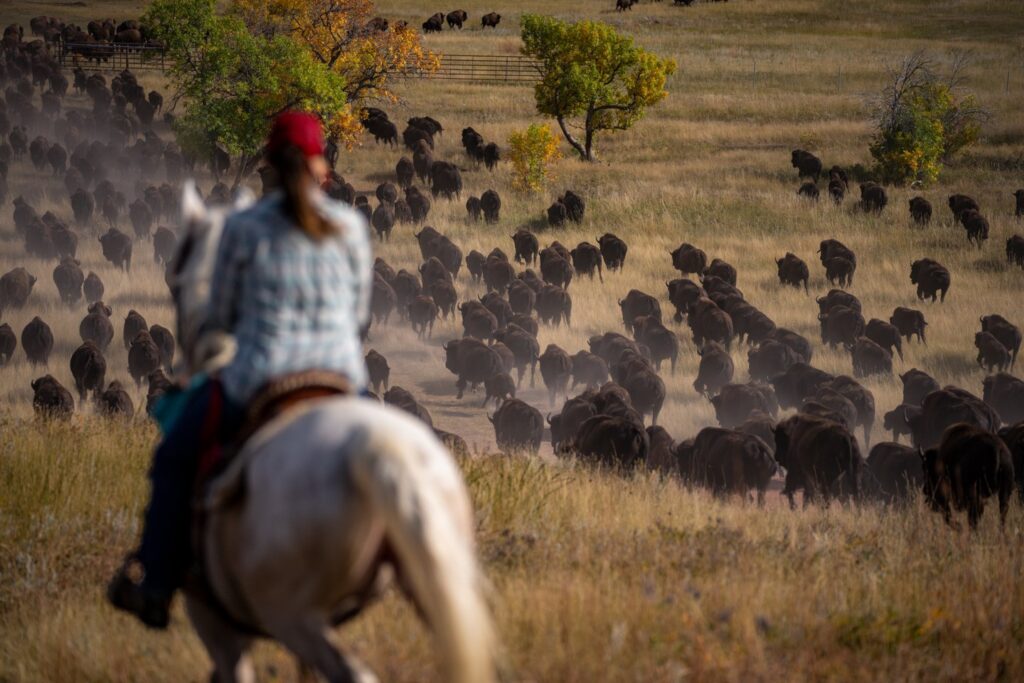
Joshua Haiar/South Dakota Searchlight
Custer State Park sold 498 bison during its 58th annual auction on Nov. 4, amassing $633,700.
That was an increase over last year’s total of 399 bison and $391,900.
The Game, Fish and Parks Commission reviewed the numbers during its meeting Thursday in Fort Pierre.
The Custer State Park Fall Classic Bison Auction follows the annual Buffalo Roundup, which has become a tourist draw. The roundup involves herding and health checks on the bison, and separating part of the herd for the auction.
The auction aims to balance the size of the park’s bison herd with the grass available for grazing.
This year’s higher number of bison sold reflects drier conditions, according to Regional Park Supervisor Matt Snyder, of the Department of Game, Fish and Parks.
“And looking ahead, the extended forecast is showing more dryness,” Snyder said, “so we want to protect the range by not overstocking animals on that range and making sure we have enough allocation for the elk, the deer and the sheep — everything else that is home to Custer State Park as well.”
Snyder said the auction brought the herd down to 960. He said wetter conditions can result in a herd up to about 1,050.
Animal weights were 50 to 75 pounds heavier than last year.
“That means our forage is good, full of nutrients, and we want to keep it that way,” Snyder said.
The average price of a buffalo at the auction was $1,272.49, compared to $982.21 in 2022.

Snyder said the funds go back into Custer State Park’s $5.5 million annual operating budget.
There were 13 bison buyers from South Dakota, three from Wyoming, and others from Alabama, California, Colorado, Iowa, Minnesota, Nebraska, North Dakota and Tennessee.
Snyder said the department is in the process of a two-year study with South Dakota State University using GPS collars to track the herd’s movement in the park.
“They’re on the cows because they’re the ones dictating the movement, so those old matriarch cows,” he said. “And what it’s doing for us is showing, where are they grazing? How long are they grazing?”
“And that’s going to help us decide if that 960 is the number we stick with,” Snyder said.
